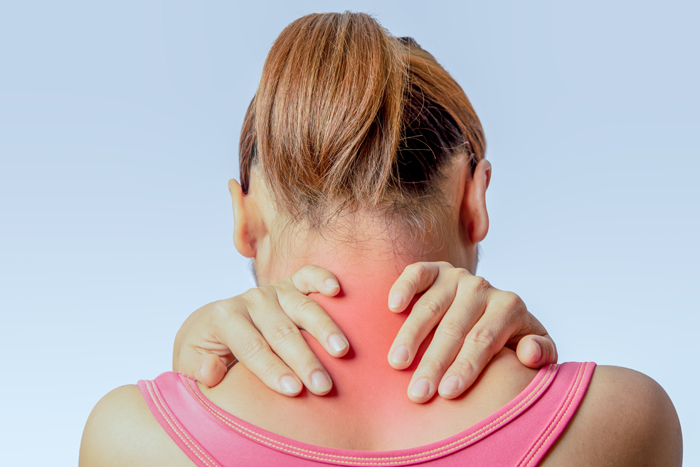Cervical Spondylosis Treatment in Kondapur, Hyderabad
Neck pain and stiffness are the most common symptoms of cervical spondylosis. Generally, cervical spondylosis is not progressive and can be treated.
What are the symptoms of cervical spondylosis?
Following are the symptoms of cervical spondylosis:
- Pain and stiffness in and around the neck.
- Headache.
- Shoulder pain.
- Turning or bending your neck becomes very hard and can interfere with driving.
- When turning your neck you can hear or feel a grinding noise.
Some of the less common symptoms are vertigo, palpitation, blurred vision, and memory problems. The symptoms are severe in the morning and at the end of the day.
Cervical spondylosis occurs when the openings in the bone start to get narrow in your spine, which in return, exerts pressure on the nerves travelling through the spine. If there is a pinch in the nerves then you can feel the following:
- There will be numbness in your hand, arm, and leg, and also you can feel a tingling effect in your arm and leg.
- You will find your arm and leg to be very weak and have difficulties with heavy objects.
- You will have problems while walking and keeping your balance or coordination.
- Cervical spondylosis occurs near the neck, thus neck pain is a common occurrence.

What are the causes of cervical spondylosis?
The following are the causes for cervical spondylosis:
- Stiff ligaments: With age, the ligaments can stiffen and result in a stiff neck.
- Bones spurs: Extra amounts of bone are produced during disk degeneration. These bones are a misguided effort to strengthen the spine and results in pinching the spinal cord and nerve roots.
- Herniated disks: The exterior of your spinal cord also gets affected with age causing cracks and resulting in herniated disks. This puts pressure on the spinal cord and nerve roots.
- Dehydrated disks: The disks present between the vertebrae of your spine act as a cushion. With age the spinal disk starts to dry out and shrink, this allows bone-on-bone contact causing pain and erosion.
How to diagnose cervical spondylosis?
You will be asked about your symptoms and medical history by your doctor. Then, you will undergo a physical examination in which the doctor at Apollo Kondapur will check your neck, shoulder, and back. Your reflexes and strength will also be tested.
A few imaging tests will also be performed on you such as magnetic resonance imaging (MRI), X-rays, and computed tomography (CT).
What are the risks factors?
Some of the risk factors for cervical spondylosis are as follows:
- Neck injuries: Neck injuries can increase the risk of cervical spondylosis.
- Occupation: If your job involves repetitive neck movements or motions, awkward sitting position, and overhead work can put extra pressure on your neck.
- Age: Cervical spondylosis is an old age issue and is a normal part of ageing.
- Smoking: Smoking can cause neck pain.
What are the treatments for Cervical Spondylosis?
Most of the treatments for cervical spondylosis are conservative. They include:
- Adequate rest.
- Use of nonsteroidal anti-inflammatory drugs (NSAIDs).
- Providing support and limiting the movement by wearing a cervical collar.
Request an appointment at Apollo Spectra Hospitals, Kondapur
Call 1860-500-2244 to book an appointment
Cervical spondylosis generally occurs in people who are above the age of 50 or 60. The treatments for cervical spondylosis are conservative. But if left untreated it can cause severe pain and may need surgery to correct it. Taking proper rest and wear a cervical collar can help to reduce the pain.
Process foods, canned foods, and fast foods should be avoided along with smoking and drinking. These should be avoided as it slows the healing process and weakens the bones.
Most of the treatments for cervical spondylosis are conservative. They include:
- Adequate rest.
- Use of nonsteroidal anti-inflammatory drugs (NSAIDs).
- Providing support and limiting the movement by wearing a cervical collar.
Symptoms
Our Top Specialities
NOTICE BOARD
CONTACT US
CONTACT US
 Book Appointment
Book Appointment


.svg)
.svg)
.svg)
.svg)








